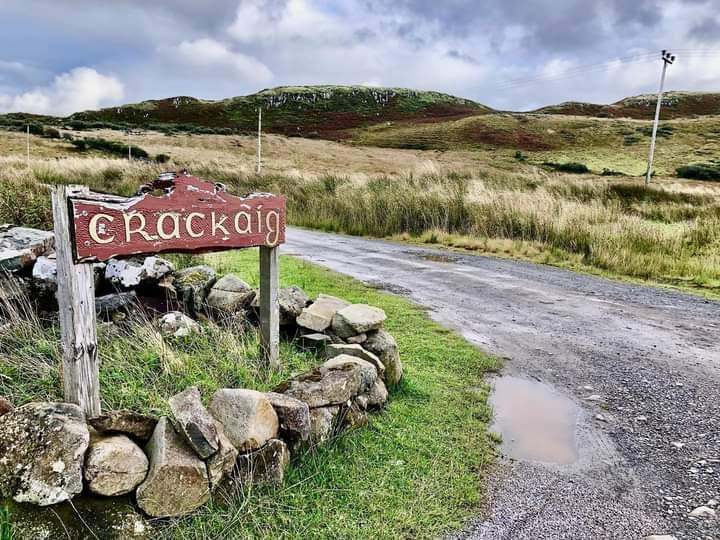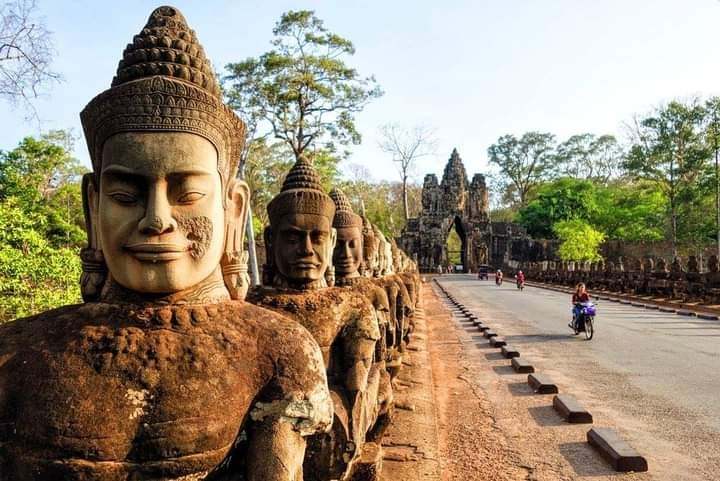Situated in the center of Southeast Asia, the Mekong Delta bears witness to the diverse range of landscapes and customs that characterize this captivating area. A delta that is one of the most fertile areas on Earth, home to a variety of ecosystems, lively cultures, and age-old customs, is created when the powerful Mekong River meanders over beautiful landscapes. Let’s travel through the enormous Mekong Delta, where the wonders of nature and human touch meet.

Image credit – Trung Huy Pham
Geographical Marvel: The Mekong Delta Unveiled
The Mekong Delta is a vast network of rivers, wetlands, and islands that stretches over 39,000 square kilometers in the southernmost region of Vietnam. This delta, which goes by the fitting moniker of the “Rice Bowl” of the nation, is the birthplace of agricultural richness due to its rich soils, which enable a variety of crops, including fruits, vegetables, and rice. A patchwork of ecosystems is created by the river’s embrace in the Mekong Delta, a geographical wonder.
Mekong River: The Lifeline of the Delta
The 12th longest river in the world, the Mekong, is located at the center of the Mekong Delta. This magnificent river rises from the Tibetan Plateau and travels more than 4,350 kilometers to the delta. The Mekong River sculpts the landscapes it touches as it flows through China, Myanmar, Laos, Thailand, Cambodia, and ultimately Vietnam, resulting in a dynamic and always shifting ecosystem.
Biodiversity Wonderland: Flora and Fauna of the Delta
The Mekong Delta is home to an amazing variety of plant and animal species, making it a hotspot for biodiversity. Many bird species, like as egrets and kingfishers, depend on the rich mangrove forests that surround the delta’s waterways as their home. The delta is teeming with life below the surface of the water, as a variety of fish species, amphibians, and crabs thrive in its complex network of rivers and canals. The Mekong Delta’s delicate biological balance provides evidence of the region’s significance for ecosystems.
Floating Markets: A Symphony of Colors and Commerce
The Mekong Delta’s bustling floating marketplaces, where boats loaded with fresh fruit create a vivid tapestry of hues against the water’s surface, are one of the most iconic images in the region. Among the most well-known floating marketplaces are Cai Rang, Phong Dien, and Cai Be, each with their own charm. Visitors and locals alike swarm to these marketplaces to see the vibrant trade of commodities that takes place from the decks of boats, ranging from handcrafted goods to tropical fruits.
Riverine Lifestyle: Life Along the Mekong’s Banks
The Mekong Delta is more than just a physical wonder; it is a real, breathing example of the adaptation and resiliency of the people who live along its banks. The landscape is dotted with traditional stilt dwellings, called “nha ong” or “nha ruong,” which provide refuge to families whose lives are closely linked to the river. The vivid markets and bright boats of the fishing communities depict a way of life influenced by the tides of the Mekong.
Cultural Mosaic: Ethnically Diverse Communities
A melting pot of various cultures and races is the Mekong Delta. Within this peaceful mosaic, the communities of Kinh, Khmer, Hoa, and Cham live, each adding to the delta’s rich cultural diversity. The delta’s residents celebrate a tapestry of traditions, from vibrant festivals and folk music to traditional dances that express the deep-rooted link between the people and the land.
Rural Charm: Agrarian Life in the Delta’s Villages
The rural communities of the Mekong Delta, removed from the busy metropolis, provide an insight into the agricultural way of life that has endured for many generations. As far as the eye can view, lush rice paddies are being cared for by farmers who have perfected the art of land cultivation. Warm smiles and the smells of freshly made local dishes may greet visitors to these villages, providing an immersive and genuine experience.
Eco-Tourism: Navigating the Delta’s Waterways
Discovering the Mekong Delta usually entails navigating its complex system of canals, an adventure that reveals the area’s best-kept secrets. Bicycle rides along riverbanks and boat trips through tiny canals are two examples of eco-tourism efforts that provide visitors with an environmentally friendly and sustainable means of taking in the beauty of the delta. These excursions offer chances for deep connections with regional people in addition to showcasing the Mekong Delta’s natural beauties.
Rice Terraces: The Green Carpet of the Delta
The Mekong Delta’s economy is based mostly on rice farming, and the region is dotted with verdant rice terraces that exhibit seasonal color changes. The rice terraces produce an amazing visual display, ranging from the vivid green of the seedlings to the golden waves of ripened rice that are ready for harvest. The delta’s everlasting charm is enhanced by the rhythm of planting and harvesting, which is determined by traditional farming methods.
Pagodas and Temples: Spiritual Oases Amidst Nature
Temples and pagodas serve as spiritual havens amid the lush surroundings of the Mekong Delta, providing opportunities for introspection and peace of mind. One famous example is the Vinh Trang Pagoda in My Tho, which has beautiful grounds and elaborate construction. In addition to being places of worship, these hallowed locations are also cultural icons that represent the spiritual legacy of the communities residing in the delta.
Culinary Delights: Flavors of the Delta’s Bounty
The cuisine of the Mekong Delta pays homage to the abundant agricultural produce of the area. The cuisine of the delta is characterized by an abundance of seafood, fragrant herbs, and fresh fruits. Foods like the noodle soup “hu tieu” and the crab-based soup “bun rieu” highlight the variety of flavors brought forth by the delta’s thriving local markets and abundant agricultural output.
Floating Homestays: Sleeping on the Mekong’s Waters
Floating homestays provide a special chance to spend the night on the waters of the Mekong Delta for those looking for a fully immersed experience. Often converted traditional boats or stilt cottages, these floating lodgings let visitors fall asleep peacefully while being gently swayed by the river’s currents. One memorable experience is waking up to see the sun rising over the waters of the delta.
Festivals and Celebrations: Vibrancy in Tradition
The calender of the Mekong Delta is filled with colorful festivals and celebrations that showcase the rich cultural diversity of the area. A couple of examples are the Nghinh Ong Festival, which honors the whale deity, and the Ok Om Bok Festival, which is a Khmer festival of the moon. These occasions, which are characterized by vibrant processions, customary dances, and open social gatherings, provide an insight into the vibrant energy of the delta.
Environmental Challenges: Balancing Preservation and Progress
The Mekong Delta is facing environmental challenges as it develops, which call for a careful balance between preservation and advancement. The ecosystems of the delta are threatened by problems like land subsidence, saltwater intrusion, and the effects of dams upstream. Preserving the natural treasures that characterize the Mekong Delta requires eco-friendly policies and sustainable practices.
Preserving Traditions: Passing Down the Delta’s Heritage
The Mekong Delta’s cultural legacy must be preserved if future generations are to benefit from the region’s abundance. The intangible cultural legacy of the delta is preserved through community-led projects, cultural education initiatives, and documenting of traditional activities. Through the transmission of customs, traditions, and skilled workmanship, communities endeavor to preserve the genuineness that renders the Mekong Delta a cultural asset.
Connecting with Locals: Shared Stories and Warm Hospitality
The stories that its people tell and the warmth of their hospitality are what really define the Mekong Delta. Making connections with locals brings a human element to seeing the delta, whether it is through traditional dances, meals shared with a family in a small village, or chats with local artists. These sincere exchanges forge enduring bonds and deepen understanding of the delta’s cultural variety.
Conservation Initiatives: Nurturing the Delta’s Ecosystems
The ecosystems of the Mekong Delta depend heavily on conservation initiatives. Numerous projects support the environmental well-being of the region, ranging from sustainable agriculture methods to the preservation of mangrove forests. Encouraging eco-friendly habits, supporting regional conservation initiatives, and participating in responsible tourism all help to preserve the delta’s natural resources.
Getting There and Travel Tips: Crafting Your Mekong Delta Experience
Planning for lodging, transportation, and engaging activities is essential to creating an amazing trip across the Mekong Delta. Road trips, boat cruises, or a mix of the two are available for exploring the delta, providing visitors with a variety of viewpoints on the area. Accommodations ranging from boutique hotels to eco-friendly lodges to homestays provide a variety of choices for lodging near the center of the delta. Important travel advice, such honoring the traditions of the area, appreciating the leisurely pace of delta life, and keeping an eye on the environment, guarantees a respectful and rewarding tour of the area.
Conclusion: Embracing the Magic of the Mekong Delta
In conclusion, visitors are invited to absorb the beauty of the enormous Mekong Delta, which is a treasure trove of natural wonders and cultural pearls. The delta tells a tale that is timeless, from the lush rice terraces to the colorful floating marketplaces and the peaceful cohabitation of many people. It is a location where the wonders of nature and human touch blend together to create an entrancing tapestry that enthralls everyone who visits. The Mekong Delta welcomes visitors with open arms, willing to share the beauty and resiliency that characterize this alluring region, whether they choose to explore its rivers, indulge in its delectable cuisine, or become fully immersed in its people’ customs.


